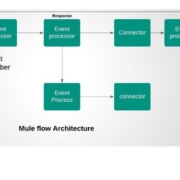
Why Unit Testing?
This is the first question most beginners ask when they struggle to relate unit test cases with real scenarios, like what value-added unit testing is doing. This was my first thought after reading JUnit documents fifteen years back. I am sure most new developers would have similar feelings after reading unit test documents alone, but I realized that unit testing is a powerful tool to release defect-free code to production. The unit testing helps to do regression testing and gives confidence for new developers to make changes to the old codebase.
MUnit For Mule Flows
MUnit is an extension of JUnit. Developers are allowed to write XML-based test cases or Java code-based test cases for Mule flows. This document covers MUnit basics, practical options for different scenarios, and automating the business validations.












